Connecting Devices (Repeaters, Bridges, Routers, Gateways)
A LAN (Local Area Network) or subnetwork normally do not work in privacy and that's why they are connected with one another through internet by using a different type of connecting device, and these connecting devices working a different way as they are different from each other and it operates a different layer of the OSI model as it required. There are many connecting devices such as:
- Repeater
- Bridges
- Routers
- Gateways
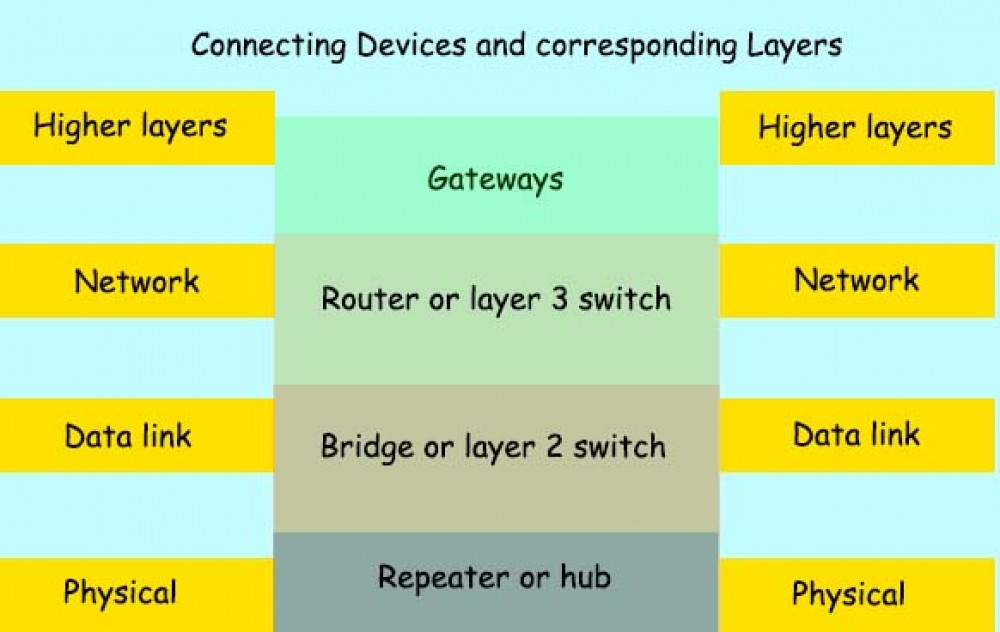
Repeaters:-Repeaters are a very simple form which work on an analog electrical signal it means that they transform the physical layer signals and their data which they are approach to the bottom layer of the OSI model. As the electrical signals move in one path it become disable as it depends upon the medium characteristics, this is the reason that LAN cannot send the signal beyond its limit, and to solve this problem and increase the length of the LAN repeaters are used.
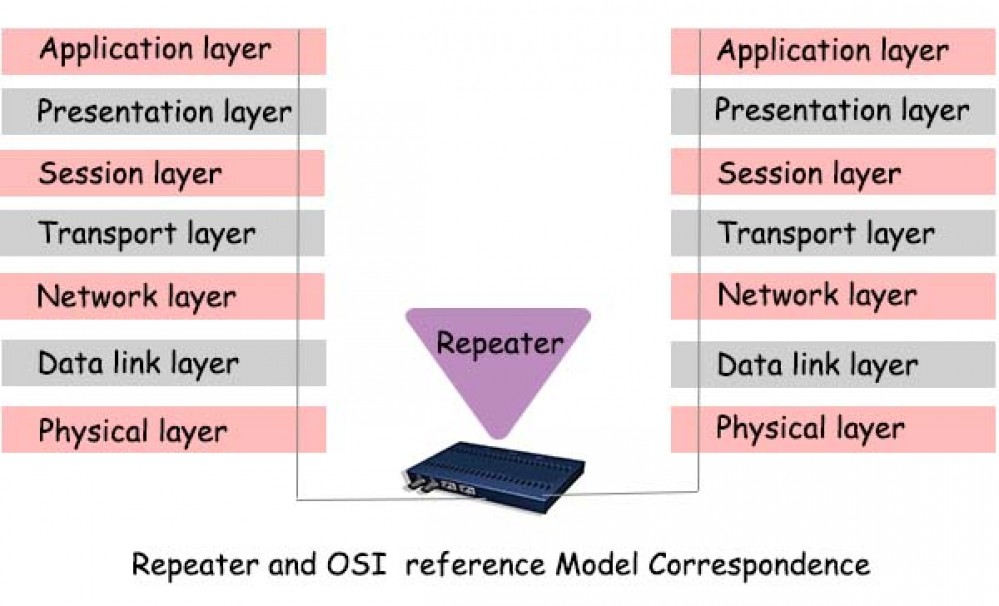
As the repeater adds the signals which is disable in the transmission it is because of the physical condition which is establishing the transmission medium. It also restores the signals in its original shape. The main advantage of repeater is that whatever is receives it transfer to the LAN segment. As the repeater connects to the multiple LAN but it is considered as a single LAN. The maximum size of Ethernet is 500 metre, but when the two Ethernet of the maximum size segments are connected together with the help of repeater it make the total length of 1000 metre. It is not possible to extend the length of LAN in the random manner of a length because Ethernet follows the CSMA / CD and its approach is successful for transmission of signal, which is based on low delay.
The repeater on the Ethernet follows 5-4-3 rule, which means that the maximum four repeaters are used to continue the Ethernet segment in a single Ethernet Network. Therefore the connection over a long distance by using the fiber modems, and this is known as Fiber Optic Intra Repeater link (FOIRL).
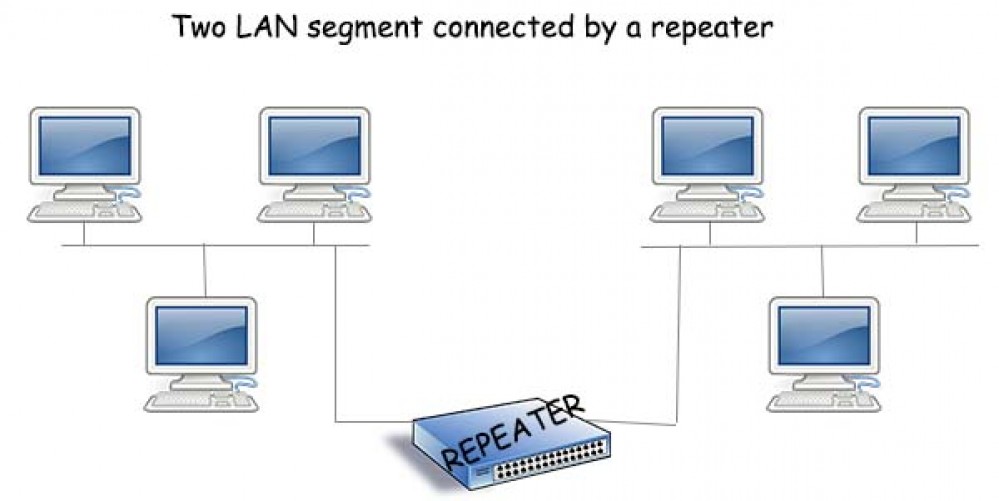
The major drawback of repeater is that it is transparent just because of the signal received at one segment is easily transmitt to the other segment. It does not understand the frame language and therefore it cannot make any difference in noise and signals. When there is a complicity in one segment, the noise is produced by the other segment of the repeater.
Repeaters are of two type:-
- Local Repeaters :- Local repeater is used to connect the LAN segment and it is abstracted in a very small distance.
- Remote Repeaters :- Remote repeater is far from each other and it is used to connect LAN in this the transmission line are known to the link segment and it provided by the two remote repeaters and no nodes are connected to this line.
Bridge:-The bridge is used to connect the two identical LAN just like a repeater.The main advantage of a bridge is that it has a filtering action .If the noise occurs on Ethernet due to distance in electrical signal, then the bridge deal incorrectly formed frame and not forward to its connected segment to the other port of the bridge.
From the architectural point of view the bridge is separate device and it is very reliable and simple. They travel data packet, it is a simple way and the evolution of the network as a whole in order to make end-to-end routing decisions . The targets of the incoming data packet and forward it along its way to the next link . So this bridge are economical and fast .There are bridges called cascading bridge which is used as a base to connect multiple LAN with multiple media.
Unlike LAN's like Ethernet-to-token ring is used to connect the bridge which is known as encapsulating bridge.The function of the encapsulating bridge is very simple as it bind and activate the data of the LAN along with its authority information about the end user. Routing function between LAN are also available in bridge.In case of broadcast and multiple packets, bridge forward these packets to all the computers attached to the segment on both sides.
Classification of Bridge
Bridge are classified into two types local and remote bridge.
- Local bridge and ordinary bridges.
- Remote bridge is used to join the networks that are miles away. A WAN is generally provided between two bridges.
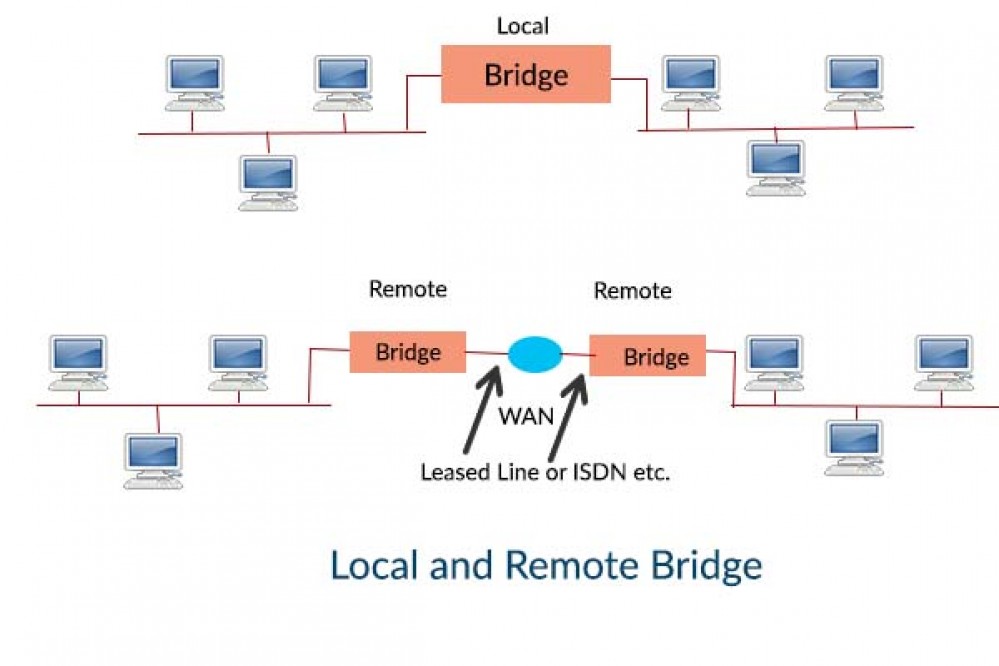
Routers:-Routers are used to connect both similar and dissimilar LAN's. It uses the physical layer, data link layer and network layer to provide connectivity it work on a network layer of OSI model it also provides addresses and switching.It is highly intelligent devices. It is a protocol, responsive, as it supports various protocols with many packets sizes such as might be involved in supporting both Ethernet and Token Ring. A router network has multiple path unlike bridges and the shortest of all paths in the network is used to transfer packets. In case of TCP/IP network, IP (Internet Protocol) are used as address for network; routers also help to interpret the IP address and delivers the packet reliably.
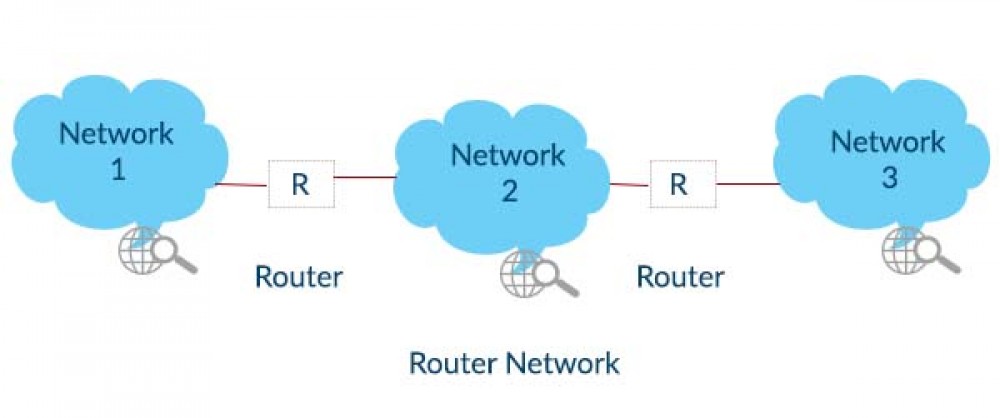
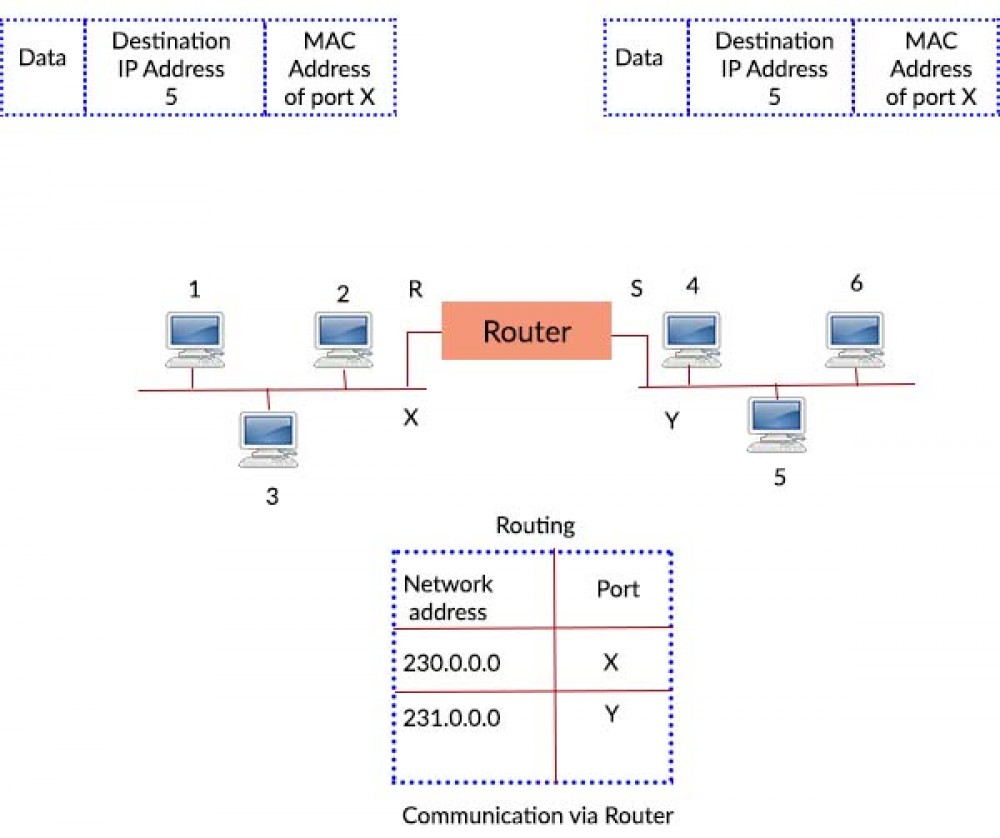
Characteristics of Routers
- Routers support filtering and encapsulation it has a multiport device with high speed backbone.
- Routers are self-learning, it can learn of the existence of the new routers, nodes and LAN segments.
- The router dynamically adapts to changes in the condition of the network it regularly monitors the activities of the network.
- It provides some level of redundancy in order that they are less susceptible to catastrophic failure.
Router Protocols
Router protocols consists of both bridging and routing protocols :
Inter-router protocols:-Inter-router protocols store data packets during periods of idleness. These are router-to-router protocols that can operate over dissimilar networks.
Serial line protocols:-Serial line protocols are used for serial or dialup links connecting unlike routers. Example HDLC, SLIP (serial line interface protocol) and PPP (point-to-point protocols).
Protocols Stack Routing and Bridging Protocols:-It commends the route as to which packets should be routed and which should be bridged.
Gateways:-Gateways operate at all seven layers of the OSI Reference Model .It is used to connect dissimilar LAN's and perform all of the functions of bridges and routers. In general it consists of software which locate in a host computer, such a midrange or mainframe.
Characteristics of Gateways
- In all the seven layers of OSI model it uses higher layer that is the application layer. IBM SNA,DECnet, Internet TCP/IP and other protocols can be converted from network-to-network.
- Gateways provide full protocol conversion from one proprietary. Apart from that Unlike bridges and routes gateways conduct a slow process because of the protocol conversion .

